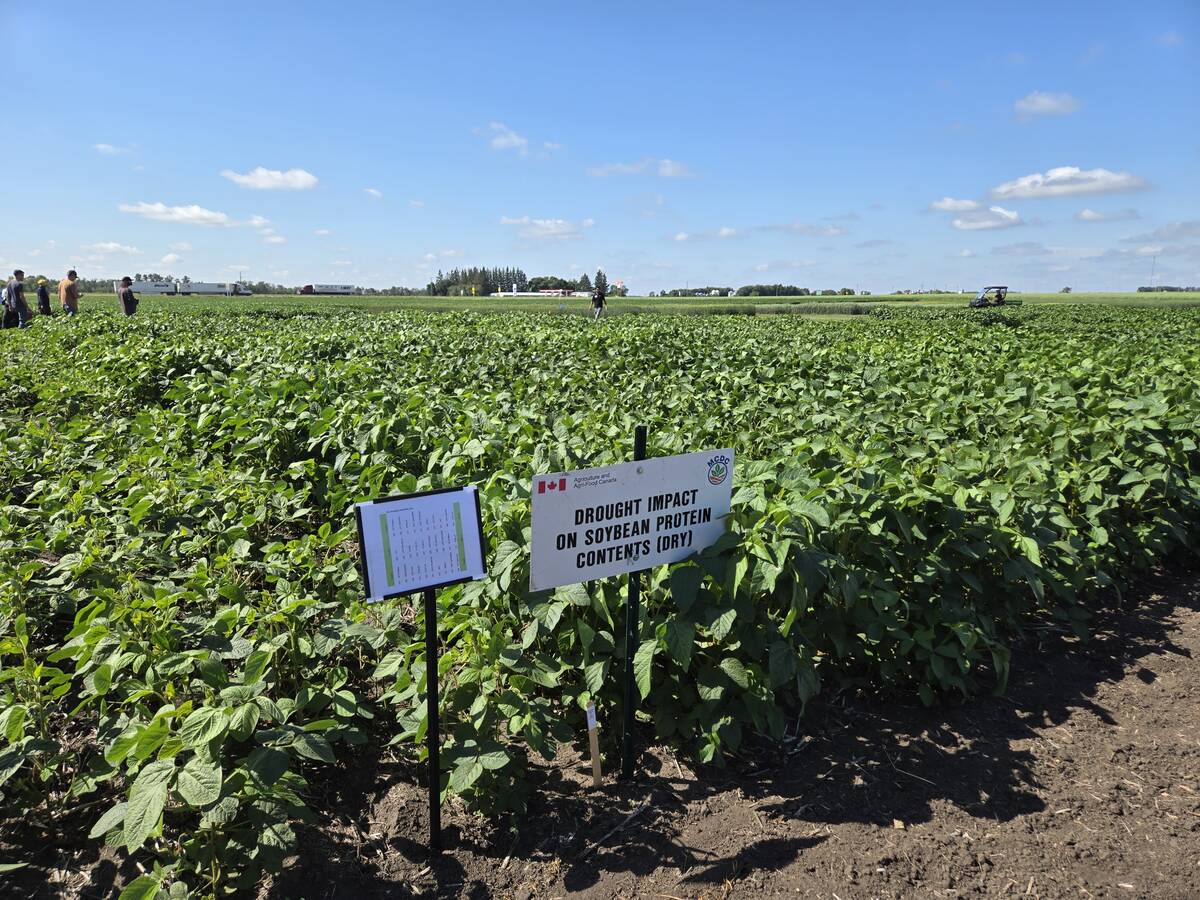For Canadian Wheat Board supporters, the barley question has been decided more
than once.
In 1993, the federal court agreed with the three prairie pools that the federal government could not create a continental barley market.
The barley vote of 1997 was also clear. Of the western Canadian barley growers who voted, 62.9 percent said the board should remain the single seller for both feed and malt barley, with an exception for feed barley sold domestically.
In addition, two elections of CWB directors have produced a majority of directors who, so far, favour keeping it that way.
Read Also

Carberry field day looks for agriculture solutions
Manitoba farmers explored research solutions for resilient crops, perpetual agronomic issues and new kinds of agricultural products at a field day at the Manitoba Crop Diversification Centre in Carberry on Aug. 6.
But while the board has handled an increasing volume of malting barley and remains a significant player in that market, its role as a feed barley exporter has diminished.
Producers over the last 10 years have not been able to resist the lure of the high prices paid by feedlots and hog barns in Western Canada. As a result, the board has gone from selling four million tonnes of feed barley in 1990-91 to just 670,000 tonnes in 1999-2000.
Is the time and energy spent on feed barley worth keeping it under the board?
For Ralph Goodale, the answer is simple: Pro-ducers will decide.
Federal legislation dictates it is up to them, not the government, said the federal minister responsible for the board.
“If farmers choose to go in that direction, that is entirely their right,” Goodale said.
“They shouldn’t be second-guessed by politicians or bureaucrats.”
Ian McCreary, a board director from Bladworth, Sask., said producers have not raised the issue with him. And he doesn’t expect they will.
“The board is not in the way of the domestic market,” he said.
“There’s no harm in having the board there.”
In a year like this one, the board may actually pick up customers and increase sales of feed barley to foreign buyers, says market analyst Errol Anderson.
As drought took its toll on the Canadian barley crop, more than 100,000 tonnes of cheap American corn flooded into southern Alberta feedlots.
Anderson, of ProMarket Communications in Calgary, said domestic feed barley prices went too high, making corn an appealing alternative.
He said this might be good news for the board, especially in places farther away from the key feeding areas, such as northern Saskatchewan and Manitoba.
“The board starts looking more attractive,” Anderson said. “Having corn enter the marketplace had a capping effect on barley values.”
National Farmers Union president Stewart Wells said corn imports from the United States might present a good argument for single-desk selling of feed barley.
“The board can extract a premium when supplies are down,” he said.
Anderson added the reduced volume of feed barley to foreign markets is not all the board’s fault.
“The board’s been reluctant to sell into the world market when they don’t know if they’re going to get (supply),” he said.
Canadian Alliance agriculture critic David Anderson said farmers have clearly made their choice.
“The government doesn’t have to respond,” Anderson said, referring to the possibility of removing feed barley from wheat board legislation.
“It can just leave it as it is.”















